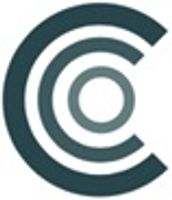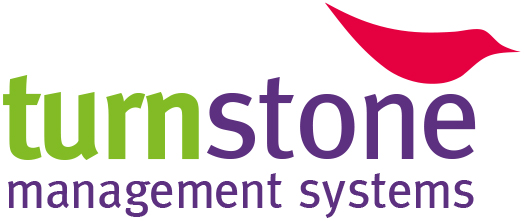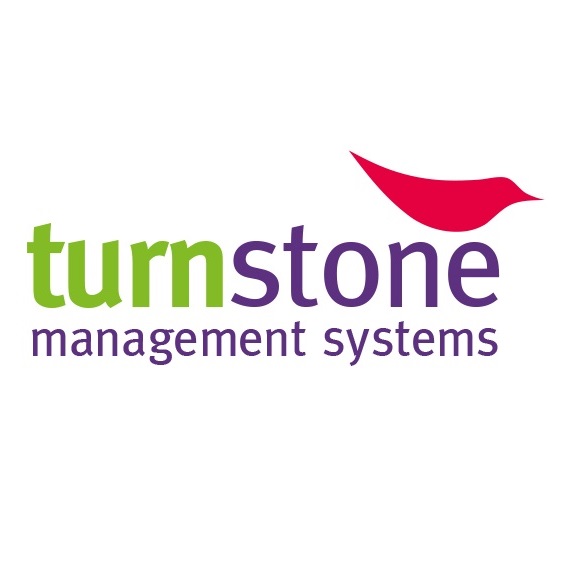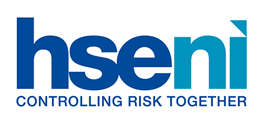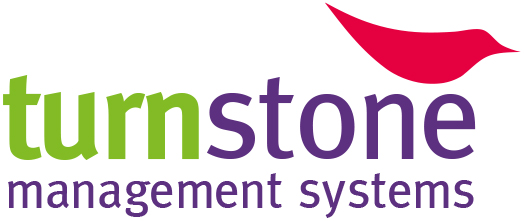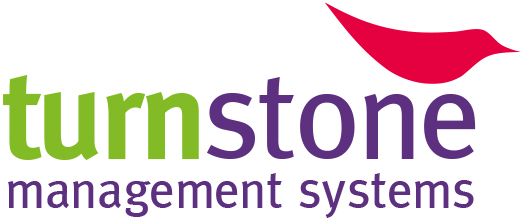Title Page
-
Site conducted
-
Conducted on
-
Prepared by
-
Location
4.0 Context of the Organization
4.1 Understanding the organization and its context
-
Has your organization determined external and internal issues relevant to its purpose and its strategic direction that affect its ability to achieve the intended result(s) of its QMS?
-
Does your organization monitor and review information about these external and internal issues?
4.2 Understanding the needs and expectations of interested parties
-
Does the organisation determine the interested parties that are relevant to the QMS and the requirements of those identified?
-
Does your organization monitor and review information about these interested parties and their relevant requirements?
4.3 Determining the scope of the quality management system
-
Does your organization determine the boundaries and applicability of the QMS to establish its scope?
-
When determining this scope, has your organization considered the external and internal issues referred to in 4.1 and 4.2?
-
When determining this scope, has your organization considered the products and services of your organization?
-
Has your organization applied all the requirements of this International Standard if they are applicable within the determined scope of its QMS?
-
Is the scope of your organization’s QMS available and maintained as documented information? (See 7.5.1a) and state the types of products and services covered, and provide justification for any requirement of this International Standard that your organization determines is not applicable to the scope of its QMS?
4.4 Quality management system and its processes
-
Has your organization established, implemented, maintained and continually improved a QMS, including the processes needed and their interactions, in accordance with the requirements of this International Standard?
-
Has your organization determined the processes needed for the QMS and their application throughout your organization, inputs required and the outputs expected from these processes and the sequence and interaction of these processes? (See 4.4)
-
Has your organization determined and applied the criteria and methods (including monitoring, measurements and related performance indicators) needed to ensure the effective operation and control of these processes; (See 9.0)?
-
Has your organization determined the resources needed for these processes and ensure their availability; (See 7.1) and responsibilities and authorities for these processes; (See 5.3)?
-
Has your organization addressed the risks and opportunities as determined in accordance with the requirements of 6.1?
-
Has your organization evaluated these processes and implement any changes needed to ensure that these processes achieve their intended results?
-
Does your organization improve the processes and the QMS as per the requirements of 10?
-
To the extent necessary, does your organization maintain and retain documented information to support the operation of its processes and have confidence that the processes are being carried out as planned?(See 7.5.1b)
5.0 Leadership
5.1.1 Leadership and commitment general
-
Does Top management demonstrate leadership and commitment with respect to the QMS by taking accountability for the effectiveness of the QMS and ensuring that the quality policy and quality objectives are established for the QMS and are compatible with the context and strategic direction of your organization?
-
Does Top management demonstrate leadership and commitment with respect to the QMS by ensuring the integration of the QMS requirements into your organization’s business processes?
-
Does Top management demonstrate leadership and commitment with respect to the QMS by promoting the use of the process approach and risk-based thinking, resources needed are available?
-
Does Top management demonstrate leadership and commitment with respect to the QMS by communicating the importance of effective quality management and of conforming to the QMS requirements and achieves its intended results and by engaging, directing and supporting persons to contribute to the effectiveness of the QMS?
-
Does Top management demonstrate leadership and commitment with respect to the QMS by promoting improvement supporting other relevant management roles to demonstrate their leadership as it applies to their areas of responsibility?
5.2 Quality Policy
-
Does Top management demonstrate leadership and commitment with respect to customer focus by ensuring that customer and applicable statutory and regulatory requirements are determined, understood and consistently met?
-
Does Top management demonstrate leadership and commitment with respect to customer focus by ensuring that the risks and opportunities that can affect conformity of products and services and the ability to enhance customer satisfaction are determined and addressed and ensuring that the focus on enhancing customer satisfaction is maintained??
-
Does Top management establish, implement and maintain a quality policy that is appropriate to the purpose and context of your organization and supports its strategic direction and provides a framework for setting quality objectives and achieves its intended results and by engaging, directing and supporting persons to contribute to the effectiveness of the QMS?
5.2.2 Communicating the quality policy
-
Is the quality policy available, communicated, understood and applied within the organization and maintained as documented information? (See 7.5.1a)
-
Is the quality policy available to relevant interested parties, as appropriate?
5.3 Organizational roles, responsibilities and authorities
-
Does Top management ensure that the responsibilities and authorities for relevant roles are assigned, communicated and understood within your organization and conforms to the requirements of this International Standard?
-
Has Top management assigned the responsibility and authority for ensuring that the processes are delivering their intended outputs?
-
Has Top management assigned the responsibility and authority for reporting on the performance of the QMS and on opportunities for improvement (see 10.1), in particular to top management and ensuring that the integrity is maintained when changes to the QMS are planned and implemented?
6.0 Planning
6.1.1 Actions to address risks and opportunities
-
Has your organization considered the issues referred to in 4.1 and the requirements referred to in 4.2 and determined the risks and opportunities that need to be addressed to give assurance that the QMS can achieve its intended results and enhance desirable effects and reduce undesired effects and can achieve improvement?
-
Does your organization plan the actions to address these risks and opportunities?
6.1.2 How the organisation plan to address risks and opportunities
-
Does your organization plan how to integrate and implement the actions into its QMS processes (see 4.4)?
-
Does your organization plan how to evaluate the effectiveness of these actions and are actions taken to address risks and opportunities proportionate to the potential impact on the conformity of products and services?
6.2.1 Quality objectives and planning to achieve them
-
Has your organization established quality objectives at relevant functions, levels and processes needed for the QMS?
-
Are the quality objectives consistent with the quality policy while also being measurable, take into account applicable requirements, relevant to conformity of products and services and used to enhancement of customer satisfaction?
-
Are the quality objectives monitored, communicated, updated and kept as documented information (See 7.5.1a)?
6.2.2 Quality objectives and planning to achieve them
-
When planning how to achieve its quality objectives, does your organization determine what will be done, resources required, who is responsible, when it will be completed and how the results will be evaluated?
6.3 Planning of changes
-
When your organization determines the need for changes to the QMS, are the changes carried out in a planned manner (see 4.4).
-
Does your organization consider the purpose of the changes and their potential consequences, integrity of the QMS, availably of resources and the allocation or reallocation of responsibilities and authorities?
7.0 Support
7.1.1 Resources general
-
Does your organization determine and provide the resources needed for the establishment, implementation, maintenance and continual improvement of the QMS?
-
Does your organization consider the capabilities of, and constraints on, existing internal resources and what needs to be obtained from external providers?
7.1.2 Resources people
-
Does your organization determine and provide the staff necessary for the effective implementation of its QMS and for the operation and control of its processes?
7.1.3 Resources infrastructure
-
Does your organization determine, provide and maintain the infrastructure necessary for the operation of its processes and to achieve conformity of products and services?
7.1.4 Environment for the operation of processes
-
Does organization determine, provide and maintain the environment necessary for the operation of its processes and to achieve conformity of products and services?
7.1.5.1 Monitoring and measuring resources general
-
Does your organization determine and provide the resources needed to ensure valid and reliable results when monitoring or measuring is used to verify the conformity of products and services to requirements?
-
Does your organization ensure that the resources provided are suitable for the specific type of monitoring and measurement activities being undertaken and maintained to ensure their continuing fitness for their purpose?
-
Does your organization retain appropriate documented information as evidence of fitness for purpose of the monitoring and measurement resources?
7.1.5.2 Measurement traceability
-
When measurement traceability is a requirement, or is considered by your organization to be an essential part of providing confidence in the validity of measurement results, is measuring equipment calibrated or verified, or both, at specified intervals, or prior to use, against measurement standards traceable to international or national measurement standards; when no such standards exist, is the basis used for calibration or verification retained as documented information?
-
When measurement traceability is a requirement, or is considered by your organization to be an essential part of providing confidence in the validity of measurement results is measuring equipment identified in order to determine their status?
-
When measurement traceability is a requirement, or is considered by your organization to be an essential part of providing confidence in the validity of measurement results safeguarded from adjustments, damage or deterioration that would invalidate the calibration status and subsequent measurement results?
-
Does your organization determine if the validity of previous measurement results has been adversely affected when measuring equipment is found to be unfit for its intended purpose and previous measurement results have been adversely affected when measuring equipment is found to be unfit for its intended purpose, does your organization take appropriate action as necessary?
7.1.6 Organizational knowledge
-
Does your organization determine the knowledge necessary for the operation of its processes and to achieve conformity of products and services and this knowledge is maintained and made available to the extent necessary?
-
When addressing changing needs and trends, does your organization consider its current knowledge and determine how to acquire or access any necessary additional knowledge and required updates?
7.2 Competence
-
Does your organization determine the necessary competence of person(s) doing work under its control that affects the performance and effectiveness of the QMS?
-
Does your organization ensure that these persons are competent on the basis of appropriate education, training, or experience?
-
Does your organization where applicable, take actions to acquire the necessary competence, and evaluate the effectiveness of the actions taken whilst retaining the appropriate documented information as evidence of competence? (See 7.5.1b)
7.3 Awareness
-
Does your organization ensure that persons doing work under your organization’s control are aware of the quality policy and quality objectives?
-
Does your organization ensure that persons doing work under your organization’s control are aware of their contribution to the effectiveness of the QMS, including the benefits of improved performance and also the implications of not conforming to the QMS requirements?
7.4 Communication
-
Does your organization determine the internal and external communications relevant to the QMS, including what, when, whom, how and who it will communicate?
7.5.1 Documented information general
-
Does your organization’s QMS include documented information required by this International Standard determined by your organization as being necessary for the effectiveness of the QMS?
7.5.2 Creating and updating
-
When creating and updating documented information, does your organization ensure appropriate identification and description (e.g. a title, date, author, or reference number), format (e.g. language, software version, graphics) and media (e.g. paper, electronic) and appropriate review and approval for suitability and adequacy?
7.5.3.1 Control of documented information
-
Is documented information (required by the QMS and ISO 9001) controlled to ensure it is available and suitable for use, where and when it is needed and adequately protected from loss of confidentiality, improper use, or loss of integrity?
7.5.3.2 Control of documented information
-
For the control of documented information, does your organization address the distribution, access, retrieval and use while addressing the storage and preservation, including preservation of legibility?
-
For the control of documented information, does your organization address control of changes (e.g. version control), retention and disposition?
-
Is documented information of external origin determined by your organization to be necessary for the planning and operation of the QMS identified as appropriate, and be controlled?
-
Is documented information retained as evidence of conformity protected from unintended alterations? (e.g. documented control register)
8.0 Operations
8.1 Operational planning and control
-
Does your organization plan, implement and control the processes (see 4.4) needed to meet the requirements for the provision of products and services, and to implement the actions determined in Clause 6 by determining the requirements for the products and services, establishing criteria for processes and control, acceptance of products and services and achieving the conformity to products and services?
-
Does your organization plan, implement and control the processes (see 4.4) needed to meet the requirements for the provision of products and services, and to implement the actions determined in Clause 6 by determining, maintaining and retaining documented information to the extent necessary to have confidence that the processes have been carried out as planned and demonstrate the conformity of products and services to their requirements?
-
Are the outputs of the planning process suitable for your organization’s operations and have controlled planned changes and review the consequences of unintended changes, taking action to mitigate any adverse effects, as necessary?
-
Does your organization ensure that outsourced processes are controlled (see 8.4)?
8.2.1 Requirements for products and services - Customer Communication
-
Does communication with customers include providing information relating to products and services, handling enquiries, contracts or orders, including changes, obtaining customer feedback relating to products and services, including customer complaints, handling or controlling customer property and establishing specific requirements for contingency actions, when relevant?
8.2.2 Requirements for products and services - Determining the requirements for products and services
-
When determining the requirements for the products and services to be offered to customers, does your organization ensure that the requirements for the products and services are defined, including any applicable statutory and regulatory requirements, considered necessary by your organization and your organization can meet the claims for the products and services it offers?
8.2.3.1 Review of the requirements for products and services
-
Does your organization ensure that it has the ability to meet the requirements for products and services to be offered to customers?
-
Does your organization conduct a review before committing to supply products and services to a customer, including requirements specified by the customer, including the requirements for delivery, post-delivery activities and those not stated by customer but are necessary?
-
Does your organization conduct a review before committing to supply products and services to a customer, including requirements specified by your organization, statutory and regulatory requirements, contract or order requirements differing from those previously expressed?
-
Are customer’s requirements confirmed by your organization before acceptance, when the customer does not provide a documented statement of their requirements?
8.2.3.2 Review of the requirements for products and services
-
Does your organization retain documented information, as applicable on the results of the review and any new requirements for the products and services? (See 7.5.1b)
8.2.4 Changes to requirements for products and services
-
Does your organization ensure that relevant documented information is amended, and that relevant persons are made aware of the changed requirements, when the requirements for products and services are changed? (See 7.5.2)
8.3.1 Design and development of products and services general
-
Does your organization establish, implement and maintain a design and development process that is appropriate to ensure the subsequent provision of products and services?
8.4.1 Control of externally provided processes, products and services general
-
Does your organization ensure that externally provided processes, products and services conform to requirements?
-
Does your organization determine the controls to be applied to externally provided processes, products and services when products and services from external providers are intended for incorporation into your organization’s own products and services and provided directly to the customer(s) by external providers on behalf of your organization?
-
Does your organization determine the controls to be applied to externally provided processes, products and services when a process, or part of a process, is provided by an external provider as a result of a decision by your organization?
-
Does your organization determine and apply criteria for the evaluation, selection, monitoring of performance, and re-evaluation of external providers, based on their ability to provide processes or products and services in accordance with requirements?
-
Does your organization retain documented information of these activities and any necessary actions arising from the evaluations? (See 7.5.1b)
8.4.2 Type and extent of control
-
Does your organization ensure that externally provided processes, products and services do not adversely affect your organization’s ability to consistently deliver conforming products and services to its customers?
-
Does your organization ensure that externally provided processes remain within the control of its QMS and define both the controls that it intends to apply to an external provider and those it intends to apply to the resulting output?
-
Does your organization take into consideration the potential impact of the externally provided processes, products and services on your organization’s ability to consistently meet customer and applicable statutory and regulatory requirements and effectiveness of the controls applied by the external provider?
-
Does your organization determine the verification, or other activities, necessary to ensure that the externally provided processes, products and services meet requirements?
8.4.3 Information for external providers
-
Does your organization ensure the adequacy of requirements prior to their communication to the external provider?
-
Does your organization communicate to external providers its requirements for the processes, products and services to be provided, approval of products and services, approval of methods, processes and equipment and including any required competence and qualification of persons?
-
Does your organization communicate to external providers its requirements for the external providers’ interactions with your organization?
-
Does your organization communicate to external providers its requirements for the control and monitoring of the external providers’ performance to be applied by your organization?
-
Does your organization communicate to external providers its requirements for the verification or validation activities that your organization, or its customer, intends to perform at the external providers’ premises?
8.5.1 Control of production and service provision
-
Does your organization implement production and service provision under controlled conditions that include the availability of documented information that defines the characteristics of the products to be produced, the services to be provided, or the activities to be performed?
-
Has your organization implemented controlled conditions that include the availability of documented information that defines the results to be achieved?
-
Has your organization implemented controlled conditions that include the availability and use of suitable monitoring and measuring resources to include the implementation of monitoring and measurement activities at appropriate stages to verify that criteria for control of processes or outputs, and acceptance criteria for products and services, have been met?
-
Has your organization implemented controlled conditions that include the use of suitable infrastructure and environment for the operation of processes and appointment of competent persons, including any required qualification?
-
Has your organization implemented controlled conditions that include validation, and periodic revalidation, of the ability to achieve planned results of the processes for production and service provision, where the resulting output cannot be verified by subsequent monitoring or measurement?
-
Has your organization implemented controlled conditions that include the implementation of actions to prevent human error and implementation of release, delivery and post-delivery activities?
8.5.2 Identification and traceability
-
Does your organization use suitable means to identify outputs when it is necessary to ensure the conformity of products and services?
-
Does your organization identify the status of outputs with respect to monitoring and measurement requirements throughout production and service provision?
-
Does your organization control the unique identification of the outputs when traceability is a requirement, and shall retain the documented information necessary to enable traceability? (See 7.5.1b)
8.5.3 Property belonging to customers or external providers
-
Does your organization exercise care with property belonging to customers or external providers while it is under your organization’s control or being used by your organization?
-
Does your organization identify, verify, protect and safeguard customers’ or external providers’ property provided for use or incorporation into the products and services?
-
When the property of a customer or external provider is lost, damaged or otherwise found to be unsuitable for use, does your organization report this to the customer or external provider and retain documented information on what has occurred? (See 7.5.1b)
8.5.4 Preservation
-
Does your organization preserve the outputs during production and service provision, to the extent necessary to ensure conformity to requirements?
8.5.5 Post-delivery activities
-
Does your organization meet requirements for post-delivery activities associated with the products and services?
-
In determining the extent of post-delivery activities that are required, does your organization consider statutory and regulatory requirements, potential undesired consequences associated with its products and services, nature, use and intended lifetime of its products and services, customer requirements and feedback obtained?
8.5.6 Control of changes
-
Does your organization review and control changes for production or service provision, to the extent necessary to ensure continuing conformity with requirements?
-
Does your organization retain documented information describing the results of the review of changes, the person(s) authorizing the change, and any necessary actions arising from the review? (See 7.5.1b)
8.6 Release of products and services
-
Does your organization implement planned arrangements, at appropriate stages, to verify that the product and service requirements have been met?
-
Does your organization ensure that the release of products and services to the customer does not proceed until the planned arrangements have been satisfactorily completed, unless otherwise approved by a relevant authority and, as applicable, by the customer?
-
Does your organization retain documented information on the release of products and services including evidence of conformity with the acceptance criteria and traceability to the person(s) authorizing the release? (See 7.5.1b)
8.7.1 Control of nonconforming outputs
-
Does your organization ensure that outputs that do not conform to their requirements are identified and controlled to prevent their unintended use or delivery?
-
Does your organization take appropriate action based on the nature of the nonconformity and its effect on the conformity of products and services taking into consideration after delivery of products, during or after the provision of services?
-
Does your organization take appropriate action based on the nature of nonconforming products and services detected and also when nonconforming outputs by correction; segregation, containment, return or suspension of provision of products and services; informing the customer; obtaining authorization for acceptance under concession?
8.7.2 Control of nonconforming outputs documented information
-
Does your organization retain documented information that describes the nonconformity, actions taken, concessions obtained and the authority deciding the action in respect of the nonconformity? (See 7.5.1b)
9.0 Performance Evaulation
9.1.1 Monitoring, measurement, analysis and evaluation
-
Does your organization determine what needs to be monitored and measured and the methods for monitoring, measurement, analysis and evaluation needed to ensure valid results?
-
Does your organization determine when the monitoring and measuring shall be performed, when results from monitoring and measurement shall be analysed and evaluated?
-
Does your organization evaluate the performance and the effectiveness of the QMS and retain appropriate documented information as evidence of the results? (See 7.5.1b)
9.1.2 Customer satisfaction
-
Does your organization monitor customers’ perceptions of the degree to which their needs and expectations have been fulfilled?
-
Does your organization determine the methods for obtaining, monitoring and reviewing this information?
9.1.3 Analysis and evaluation
-
Does your organization analyse and evaluate appropriate data and information arising from monitoring and measurement?
-
Does your organization ensure that the results of analysis are used to evaluate conformity of products and services and degree of customer satisfaction and evaluate the performance and effectiveness of the QMS?
-
Does your organization ensure that the results of analysis are used to evaluate if planning has been implemented effectively, the effectiveness of actions taken to address risks and opportunities, performance of external providers and need for improvement to the QMS?
9.2.1 Internal audit
-
Does your organization conduct internal audits at planned intervals to provide information on whether the QMS conforms to your organization’s own requirements for its QMS, requirements of ISO 9001:2015 and whether the QMS is effectively implemented and maintained?
9.2.2 Internal audit company input
-
Does your organization plan, establish, implement and maintain an audit programme(s) including the frequency, methods, responsibilities, planning requirements and reporting, which shall take into consideration the importance of the processes concerned, changes affecting your organization, and the results of previous audits?
-
Does your organization define the audit criteria and scope for each audit?
-
Does your organization select auditors and conduct audits to ensure objectivity and the impartiality of the audit process and the results are reported to relevant management for appropriate correction and corrective actions to be carried out without undue delay?
-
Does your organization retain documented information as evidence of the implementation of the audit programme and the audit results? (See 7.5.1b)
9.3.1 Management review general
-
Does Top management review your organization’s QMS, at planned intervals, to ensure its continuing suitability, adequacy, effectiveness and alignment with the strategic direction of your organization?
9.3.2 Management review input
-
Does the management review planned and carried out taking into consideration the status of actions from previous management reviews and external and internal issues that are relevant to the QMS?
-
Does the management review planned and carried out taking into consideration information on the performance and effectiveness of the QMS, including trends in customer satisfaction and feedback from relevant interested parties, extent to which quality objectives have been met and process performance and conformity of products and services?
-
Does the management review planned and carried out taking into consideration information on the performance and effectiveness of the QMS, including trends in nonconformities and corrective actions, monitoring and measurement results, audit results and performance of external providers?
- Compliant
- OFI
- Minor NC
- Major NC
-
Does the management review planned and carried out taking into consideration the adequacy of resources, effectiveness of actions taken to address risks and opportunities (see 6.1) for improvements?
9.3.3 Management review outputs
-
Do the outputs of the management review include decisions and actions related to opportunities for improvement, decisions and actions related to any changed to the QMS and resources needs?
-
Does your organization retain documented information as evidence of the results of management reviews? (See 7.5.1b)
10.0 Improvement
10.1 Improvement general
-
Does your organization determine and select opportunities for improvement and implement any necessary actions to meet customer requirements and enhance customer satisfaction and any necessary actions to improving products and services to meet requirements as well as to address future needs and expectations which will help in correcting, preventing or reducing undesired effects?
-
Does your organization determine and select opportunities for improvement and implement any necessary actions to improving the performance and effectiveness of the QMS?
10.2.1 Nonconformity and corrective action
-
When nonconformities occur, including any arising from complaints, does your organization react to the nonconformity take action to control and correct it and deal with the consequences?
-
When nonconformities occur, including any arising from complaints, does your organization evaluate the need for action to eliminate the cause(s) of the nonconformity, in order that it does not recur or occur elsewhere by reviewing and analysing, determining the cause and identifying trends occurring the nonconformity?
-
When nonconformities occur, including any arising from complaints, does your organization implement any action needed, conduct review, update risks and opportunities as necessary?
-
When nonconformities occur, including any arising from complaints, does your organization make changes to the QMS, if necessary?
-
Does your organization ensure that corrective actions are appropriate to the effects of the nonconformities encountered?
10.2.2 Nonconformity and corrective action documented information
-
Does your organization retain documented information as evidence of the nature of the nonconformities and any subsequent actions taken and keep a retain documented information as evidence or results of any corrective actions? (See 7.5.1b)
10.3 Continual Improvement
-
Does your organization continually improve the suitability, adequacy and effectiveness of the QMS?
-
Does your organization consider the results of analysis and evaluation, and the outputs from management review, to determine if there are needs or opportunities that shall be addressed as part of continual improvement?
